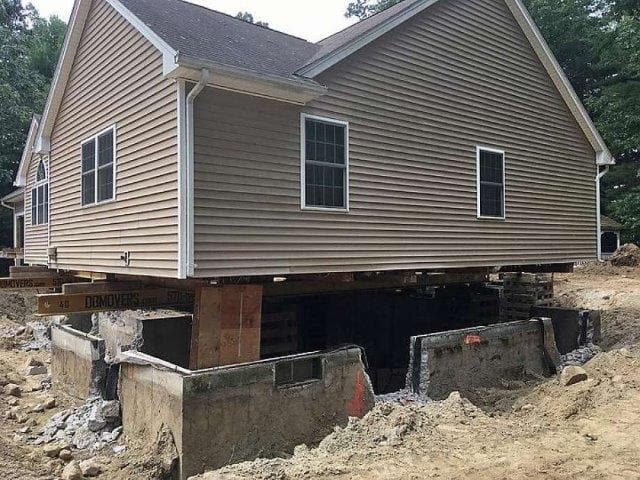Getting The Best Basement Waterproofing To Work
Getting The Best Basement Waterproofing To Work
Blog Article
About Best Basement Waterproofing
Table of ContentsHow Best Basement Waterproofing can Save You Time, Stress, and Money.Unknown Facts About Best Basement WaterproofingThe Ultimate Guide To Best Basement WaterproofingBest Basement Waterproofing Fundamentals ExplainedOur Best Basement Waterproofing Diaries
usages excavation methods toward the base of the structure's structure. entails getting rid of dampness after it has gone into the cellar. AdvantaClean's qualified specialists and service technicians will certainly find the water source. If wall surface or slab fractures exist, we will certainly inject polyurethane and epoxies into the cracks and secure the concession, preventing additional dampness from entering.
If there's condensation on the outside of the foil, you have high moisture in your basement. If the foil has condensation on the inside surface area (following to the wall), the soil around your residence may be naturally damp from a high water table or poor soil drainage.
You can waterproof simply your interior wall surfaces, which might fix the issue. Or you can waterproof your outside wall surfaces, which is a far better bet however even more pricey. Right here's the inside story on the various types: These thick finishings are cement-like. Once they dry out, they stick completely to concrete and masonry walls (Best Basement Waterproofing).
The smart Trick of Best Basement Waterproofing That Nobody is Discussing
Swirl the brush at the final phase of application to offer the wall surface an attractive, ended up look. Concrete water-proof coverings can't be put on previously painted surface areas; check the tag. A 5-gallon container costs about $60. Also referred to as densifiers, they are suitable just for walls that have not been repainted or secured.
You brush, roll, or spray it on much even more thickly one gallon covers simply 75 square feet, not the 300 square feet common with conventional paint. Water resistant paint is fine for do it yourself application. You can apply it over repainted surface areas, and paint over it once it's cured (one gallon expenses $37).
It can cost $10,000 to $15,000, depending upon the job required. Outside waterproofing includes excavating all around the home to the complete depth of the structure wall surfaces, then mounting a water resistant covering or membrane topped by water drainage panels. The panels supply a simple course for water to stream down to an external French drainpipe at the end of your structure.
We have actually all been caught in a storm without umbrella or raincoat (Best Basement Waterproofing). And it's constantly a recipe for disaster: everything's wet, your hairdo is destroyed, and points are obtaining musty. A basement without waterproofing is type of like that. Minus the spoiled hairstyle component. Your cellar doesn't wish to experience a downpour without correct security equally as long as you do not intend to.
The Of Best Basement Waterproofing
If you have actually done your study, you 'd know there are two kinds of waterproofing: interior and exterior. It can get perplexing what they both mean, which one's a better financial investment, and what will actually try this out keep the water out. Do not stress, we assembled this blog site to easily define both approaches for you and review the advantages and disadvantages of each.
Exterior waterproofing is a waterproofing approach more tips here that includes securing your home from the outside. It's kind of like a moat around a castle. It involves excavating a trench around your entire residence down to the foundation (regarding 8 to 10 feet down). The foundation wall surfaces are then cleaned up, secured, and covered with a waterproof membrane or sealer.
Best Basement Waterproofing Can Be Fun For Everyone
It's a much more engaged procedure that needs excavating up your lawn, which is pricey and lengthy. Outside waterproofing includes eliminating whatever bordering your home, including verandas, driveways, walkways, landscaping, air conditioning systems, decks, and so forth. If any one of the work was done improperly and water is still entering your cellar, there isn't much you can do to correct or fix it.
Interior cellar waterproofing involves waterproofing from the within. Any type of water that leaks right into your cellar is rerouted prior to it touches your floor. It's sort of like wearing a raincoat under your clothes. It entails two things: a water drain track and a sump pump. It works by sealing the inside of your cellar walls and floorings so water that tries to get in is carried out via a sump pump.
It's a reliable approach to water-proof your basement - Best Basement Waterproofing. The downside of indoor cellar waterproofing primarily relates to the installment process. This approach calls for stored things, furniture, and built-in shelving redirected here or closets to be relocated from touching the basement wall surfaces. And throughout setup, your cellar can not be made use of. The greatest difference between the 2 approaches is this: Exterior waterproofing is a preventative service and indoor waterproofing is a rehabilitative service.
Best Basement Waterproofing Things To Know Before You Get This
In final thought, exterior and indoor cellar waterproofing are both reliable methods of protecting your home from water damages. Exterior waterproofing develops a barrier that avoids water from entering your home, while indoor waterproofing redirects water that does enter your home. And it's essential to keep in mind that exterior waterproofing is an expensive and turbulent installation procedure when contrasted to interior waterproofing.
Whichever approach you choose, make certain you select a reliable and trustworthy service provider for the work. Both approaches call for seasoned workers to handle the job. If you have any kind of concerns regarding basement waterproofing, please get to out to us. And if you remain in our solution location and have water in your cellar, contact us for a complimentary, no-obligation home assessment.
You can fill in our form below, begin a chat in the lower right-hand edge, or call us at 1-800-827-0702.
Report this page